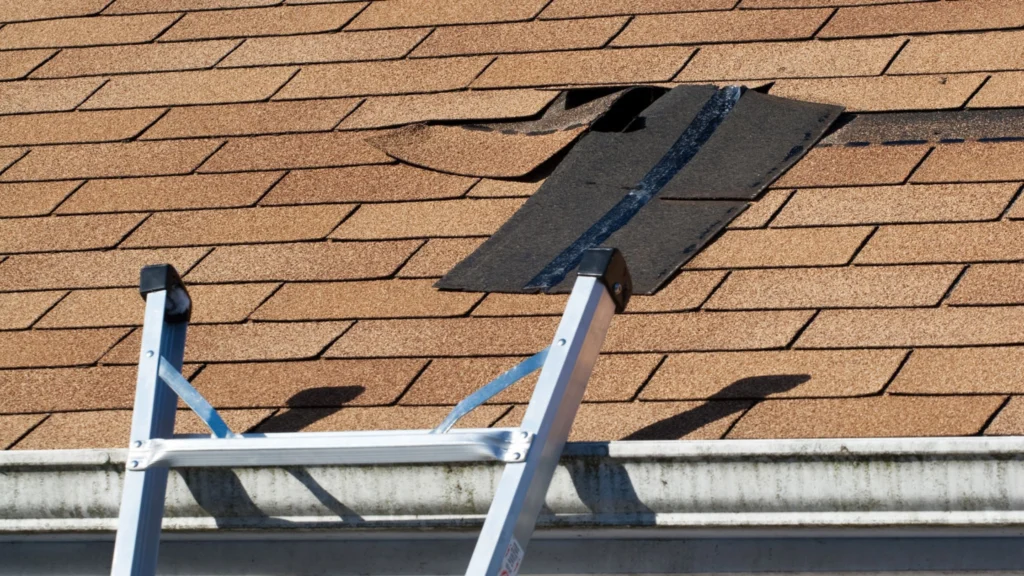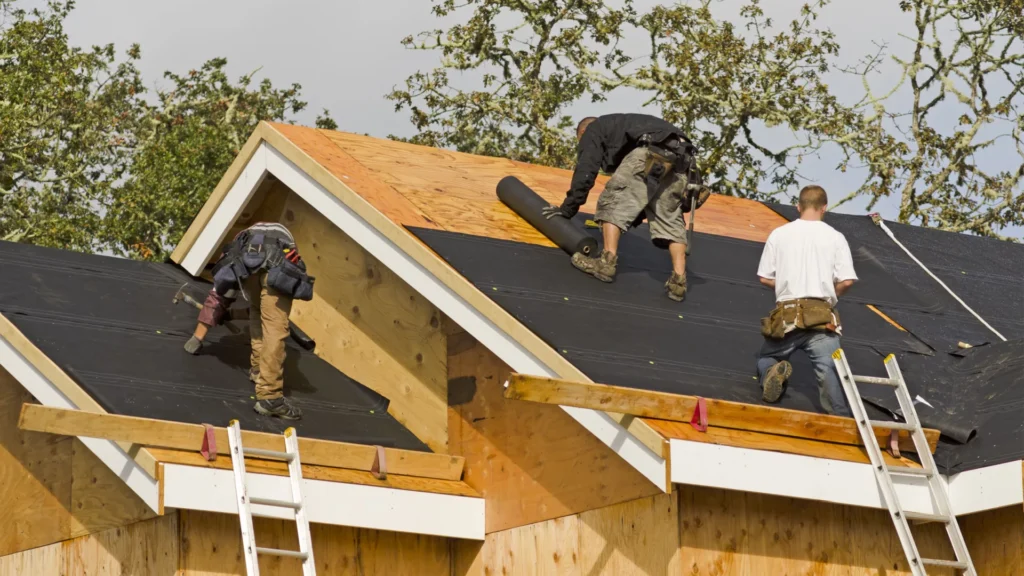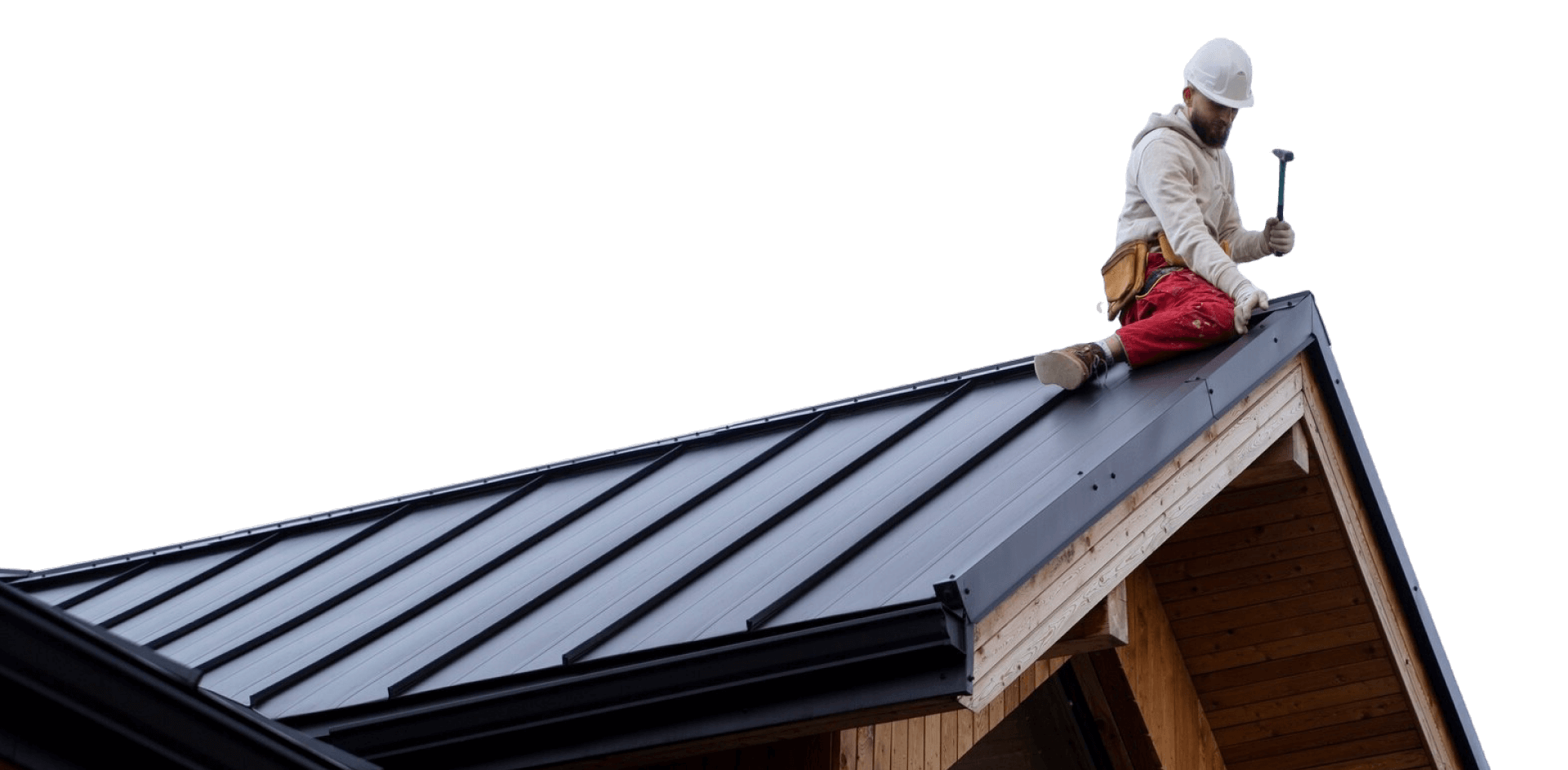What’s the Best Roofing Underlayment? Pros, Cons & What Contractors Recommend
When planning a new roof or replacing an old one, it’s easy to focus on what you can see—shingles, flashing, maybe even gutters. But there’s a critical component beneath the surface that deserves your attention: roof underlayment. One of the most common questions roofing contractors get is, “What is the best underlayment for roofing?”
This hidden layer plays a key role in protecting your home from water, wind, and long-term damage. And when you’re investing thousands into a roof, you want to make sure every layer, including what’s under the shingles, is built to last. In this article, we’ll explain the two main types of underlayment, compare their pros and cons, and share what contractors like Proper Roofing recommend for long-term protection and value.

Roof Underlayment Explained
What Is Roof Underlayment?
Roof underlayment is a protective barrier that is installed directly over the roof decking (the wooden base of your roof) and under your shingles. Think of it as the second skin of your roof—a shield that catches and repels water that sneaks past your shingles due to wind, ice dams, or severe storms.
If shingles are your roof’s armor, underlayment is the moisture-blocking layer beneath it. Whether you’re installing asphalt shingles, metal, or another material, underlayment is a required and essential component. It not only helps extend the life of your roof but also plays a role in your home’s energy efficiency and protection from mold and rot.
Types of Roof Underlayment
There are two primary types of underlayment used in modern residential roofing: felt and synthetic. Let’s take a closer look at each.
Felt Underlayment
Also known as tar paper, felt underlayment has been used in roofing for over a century. It’s made from natural or synthetic materials (like fiberglass) that are soaked in asphalt to help with water resistance.
Felt comes in two main weights:
- 15-pound felt (15 lb): Thinner, easier to handle, but more prone to tearing.
- 30-pound felt (30 lb): Thicker and more durable but heavier and more difficult to work with.
While felt is effective and relatively inexpensive, it does have limitations:
- It absorbs water, which can lead to wrinkles, shrinkage, or eventual roof decking damage if exposed too long.
- It tears easily, especially in windy or wet conditions.
- It becomes slippery when wet, increasing the risk for installers.
Despite these downsides, some budget-conscious homeowners still opt for felt due to its lower upfront cost.
Synthetic Underlayment
Synthetic underlayment is the newer, more advanced option. Made from woven or spun polymers like polypropylene or polyethylene, it’s designed to outperform felt in nearly every category.
Advantages include:
- Lightweight and easy to install – One roll can cover significantly more area than felt, reducing labor time.
- Tear-resistant and durable – It can withstand heavy winds and foot traffic without ripping.
- Water-repellent – Rather than soaking up water, it actively resists it.
- Safer for installers – Most synthetic underlayment has a non-skid surface that provides better traction, reducing fall risks.
This modern material has quickly become the preferred choice for professional roofers—including the expert team at Proper Roofing—because of its strength, efficiency, and ability to hold up in extreme weather.
What Is the Best Underlayment for Roofing?
Both felt and synthetic underlayment are designed to serve the same purpose: to protect your roof decking from water damage. However, when it comes to durability, installation ease, and long-term performance, synthetic underlayment stands out as the superior option.
Here’s why Proper Roofing—and many other contractors—consistently recommend synthetic underlayment:
1. It’s Lightweight and Efficient
Because synthetic underlayment is lighter, roofers can carry and install it faster. One roll often covers four times the area of felt, meaning fewer trips up the ladder and quicker installation. This can lower labor costs and speed up the project timeline, especially valuable if you’re racing the weather.
2. It’s More Durable and Water-Resistant
Unlike felt, which can tear or deteriorate when exposed to wind or water, synthetic underlayment is built to last. It repels water instead of absorbing it, reducing the risk of mold, rot, or leaks. Plus, it’s far more resistant to UV exposure and can withstand delays in shingle installation without deteriorating.
3. It’s Safer for Workers
Safety is a top priority on any roofing project. Synthetic underlayment often comes with anti-slip coatings that make walking on a steep roof safer. This not only protects roofing crews but also helps ensure your roof is installed with fewer accidents or complications.
4. It’s Cost-Effective in the Long Run
While the initial cost of synthetic underlayment is higher than felt, its performance justifies the price. It lasts longer, holds nails better, and won’t need to be replaced as often, making it a smart investment if you’re looking for a low-maintenance, high-performing roof.
What Is the Most Common Underlayment?
Traditionally, felt underlayment was the most commonly used material in residential roofing. Its widespread availability and low cost made it a go-to option for decades.
However, in the past 20 years, synthetic underlayment has become increasingly common. Many roofing companies now use it as their default product due to its superior performance and easier handling. In fact, some manufacturers are phasing out certain grades of felt because synthetic has become so widely adopted.
Today, synthetic underlayment is quickly becoming the new industry standard, especially in areas prone to extreme weather.
Comparing Felt and Synthetic Underlayment
| Feature | Felt Underlayment | Synthetic Underlayment |
| Material | Asphalt-saturated felt | Polypropylene or polyethylene |
| Water Resistance | Absorbs water | Repels water |
| Tear Resistance | Low | High |
| UV Resistance | Poor | Good |
| Installation | Heavier, more rolls are needed | Lightweight, fewer rolls |
| Safety | Slippery when wet | Anti-slip surface |
| Cost | Lower upfront | Higher upfront, better value |
Why Underlayment Matters in a Roofing System
You might think your shingles are doing all the heavy lifting, but underlayment is your backup barrier that protects your home if shingles fail or blow off. If your shingles shift in a storm or aren’t sealed properly, the underlayment becomes the only thing between your attic and a major leak.
Without a quality underlayment:
- Water can seep into your decking, causing rot.
- Moisture buildup can lead to mold and insulation damage.
- Your roof’s lifespan can be significantly shortened.
It’s not a place to cut corners. At Proper Roofing, we’ve seen firsthand the damage that poor-quality or missing underlayment can cause—and we always recommend investing in the best.
Choosing the Right Underlayment

Felt and synthetic underlayments both protect your roof, but synthetic offers better performance, safety, and value, especially in the long run. It’s what roofing professionals trust and what more homeowners are choosing as the new standard.
Whether you’re building a new home, upgrading your current roof, or just planning ahead, don’t underestimate the importance of underlayment. It’s a relatively small decision that can make a big difference in how your roof performs over time.
Ready to Protect Your Roof With the Best Materials?
Proper Roofing is here to help you make smart, informed decisions about your roofing system. Whether you’re installing a new roof or replacing an old one, we use top-tier materials—like synthetic underlayment—to ensure long-lasting protection.
Our experienced Coquitlam Roofing team works with you to recommend the best products for your needs and budget.
We prioritize quality, safety, and satisfaction on every project. Let us help you build a roof that’s strong from the ground up. Call Proper Roofing today to schedule your free consultation!
Check out our social media pages below:
Check out some of our blogs to help with your Roofing needs:
What Type of Underlayment for Metal Roof


